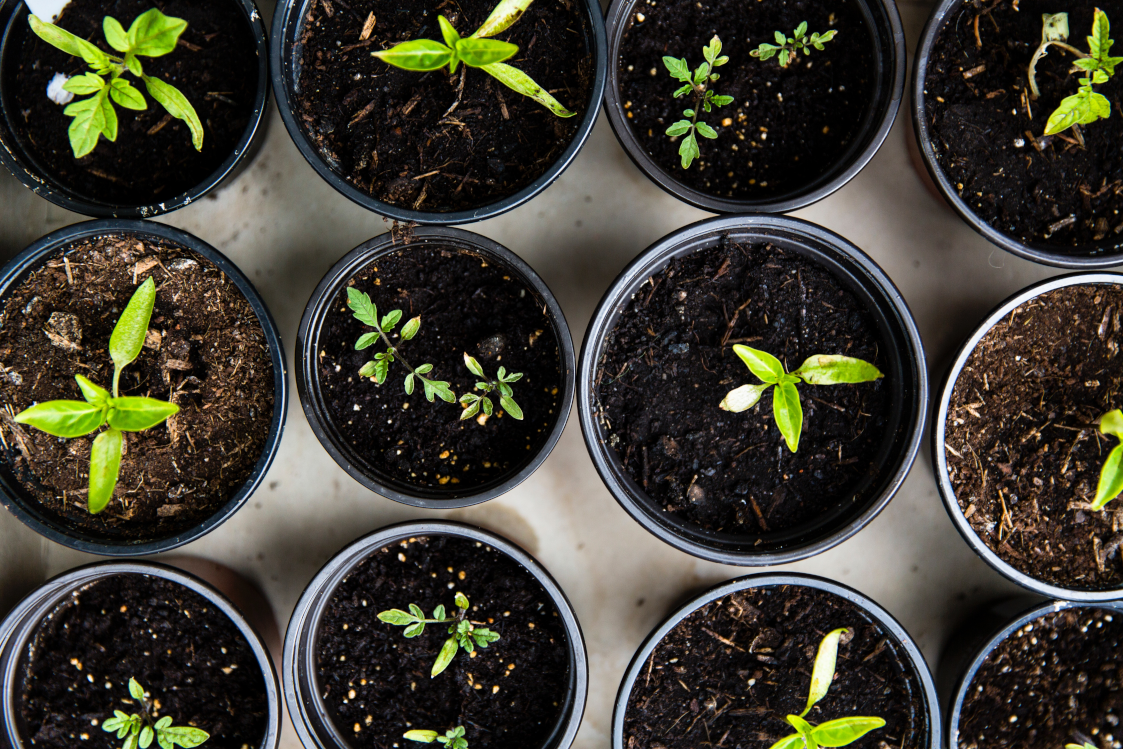
How To Turn Your Backyard Into A Medicine Chest
Want to avoid some of the most common health problems?
Turn to food as medicine.
Want to dodge the pitfalls associated with inflammation?
Turn to food as medicine.
Want to enhance bland and boring “healthy meals” while transforming your health in the process?
Turn to food as medicine.
I believe very strongly that food is indispensable in helping make people healthier.
And while I’ll never be one to discount the distinct advantages that certain drugs have in the treatment and prevention of many conditions...I know we’d see far fewer issues if people would eat well.
This article will be a guide for growing some of the best anti-inflammatory foods right in your backyard, to help you become healthier.
Even if you don’t have a green thumb, I wouldn’t worry.
People who couldn’t keep a dandelion alive will be able to grow these foods.
I also want to mention when I say these foods are medicine, I mean that in the classical sense.
Most people will read that and misinterpret what I’ve written and say these foods can be used to replace prescription drugs. That’s not true at all.
It’d be irresponsible of me to say that anyone could cure, or absolutely prevent a disease by turning to food as medicine.
That being said, I believe very strongly that if you want to compliment your health and help fight disease, these foods will help.
I’ve not only included information on the herbs, but I’ve linked the best videos on how to grow them so you’ll have a thriving medicine chest in no time.
5 Foods You Can Grow To Help Fight Inflammation
Inflammation is likely one of the biggest contributing factors for a host of chronic diseases that we see daily in my office.
I’ve written about it extensively, and that’s why I’m going to use the first part of this series to focus on herbs that you can grow to help fight inflammation.
1 - Holy Basil/Tulsi: Besides making pizza taste better, basil has strong anti-inflammatory properties that make it a great herb to grow.
Bear in mind, regular basil is good for you, but Holy Basil is far better from a medicinal perspective. A wide variety of studies support its use for a variety of conditions. For instance, one study showed an extract of basil could help reduce the swelling associated with arthritis by up to 73%. That’s performance on the level of many anti-arthritis drugs.
Another study out of Malaysia showed the use of basil helped to reduce joint swelling among lab animals, also supporting its use as an anti-inflammatory agent.
Here’s a great video showing you how to grow it.
2 - Cayenne Pepper: Non-chiliheads need not apply as cayenne pepper is quite hot. The good news is it’s that spice that helps deliver its potent anti-inflammatory properties.
Cayenne peppers are loaded with a variety of flavonoids and carotenoids that help fight oxidation and reduce inflammation. The main one is capsaicin and this is the one that gives cayenne the heat it’s known for. It also has vitamin C, vitamin B6, vitamin E, potassium and manganese to help round out its anti-inflammatory properties.
Capsaicin is such a powerful antioxidant that there are research studies showing it may help boost the immune system. A study from UCLA indicated capsaicin helps to stop the growth of cancer cells and even prevents new ones from growing.
Want to grow cayenne? Check out this video.
3 - Rosemary: Rosemary’s one of those herbs that a lot of people grow in their backyards because it looks good and smells great...but it’s actually another powerful anti-inflammatory agent.
The reason? It’s filled with an antioxidant known as rosmarinic acid, and this acid helps block inflammation.
Several studies have shown rosemary to be effective at helping boost immune response, as well as helping to reduce the levels of swelling and pain in those who suffer from achy joints.
For instance, a 2003 study supported the use of rosmarinic acid to help reduce (and even halt the progression) of arthritis. In fact, German practitioners are currently using rosmarinic acid applied topically to help fight achy joints.
While most studies around rosemary are focused on the topical applications of rosmarinic acid, there are other studies showing ingestion helps fight inflammation.
4 - Sage: Sage is such a fun plant to use and grow. Not only does it love growing here in America, it’s one of the most potent in terms of anti-inflammatory properties.
In fact, the International Herb Association awarded sage the title of "Herb of the Year" because of its ease of use and its health properties.
Sage is closely related to rosemary and it possesses rosmarinic acid in great concentration. In addition, it also has a variety of volatile oils, flavonoids (including apigenin, diosmetin, and luteolin), and phenolic acids which help it fight inflammation.
One of the ways it helps to boost health is by helping improve memory and mental function. As the World’s Healthiest Foods writes:
“ Pharmacological Biochemical Behavior confirms what herbalists have long known: sage is an outstanding memory enhancer. In this placebo-controlled, double-blind, crossover study, two trials were conducted using a total of 45 young adult volunteers. Participants were given either placebo or a standardized essential oil extract of sage in doses ranging from 50 to 150 microls. Cognitive tests were then conducted 1, 2, 4, 5, and 6 hours afterwards. In both trials, even the 50 microl dose of sage significantly improved subjects' immediate recall.”
We strongly suspect inflammation plays a big role in mental health issues like age-related memory loss and also believe anything we can do to reduce inflammation will enhance brain function while simultaneously protecting the brain.
Here’s Learn How To Garden’s video on growing sage.
5 - Oregano: Another herb on the list you might recognize from Italian cooking, oregano is also another one of the most potent anti-inflammatories on the planet.
Oregano is most well known for its antibacterial and antiviral properties. These properties help to raise the health of your immune system, indirectly affecting your body’s ability to help fight inflammation.
Oregano contains a signature ingredient known as carvacrol which is so potent, it’s used in a variety of cleaning products to replace bleach and other harmful chemicals.
While boosting immune health is an obvious benefit, that’s not the only way oregano can help fight inflammation.
Oregano also contains beta-caryophyllene (BCP), which has been indicated to help fight inflammation across several channels. Further research may support the use of E-BCP to help with blood sugar, as well as bone and heart health.
Oregano, like rosemary and sage is quite hardy and relatively easy to grow. Here’s a video giving you some pointers on growing it.
Will You Start Growing Any Of These?
I understand that many of you will see growing these herbs and foods as a fruitless endeavor.
And while you can just head down to the grocery store to buy any of these; growing them in your backyard, or even in your home, is a great way to boost health, save money, and feel good about doing your part to stay local.
Seeds and containers are all you’ll need to start, and once you get your plants going, you’re going to love all the food you have available on demand.
Will you start?
Talk soon,
Dr. Wiggy
www.HealthAsItOughtToBe.com



